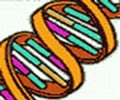Clinical Features
The appearance of the child provides the first clue in the diagnosis of Weaver syndrome.
Features of patients diagnosed with Weaver syndrome are:
- The children are overweight before and after birth. Their birth height is also increased. However, the effect on weight is significantly more as compared to the effect on height.
- The face in the first year of life is round and larger than normal. The child shows an abnormal positioning of the lower jaw, the condition referred to as retrognathia. The chin is small but very prominent and often shows the presence of a central dimple. The face becomes longer as the child grows.
- The fingers and toes may show the presence of prominent fingertip pads and deep-set nails. Camptodactyly or a bent little finger is commonly seen in these patients. Overriding toes have also been observed. Foot deformities like high-arched feet and clubfeet may be present. Knee and elbow joints are large with restricted extension. X-ray of these larger joints may show abnormalities (metaphyseal flaring). Bone age is advanced on radiological tests.
- Speech is slurred and patients have difficulty with articulation. Voice is hoarse and low pitched.
- Most patients show a delay in behavior and intelligence during the early stages. The children may show poor concentration and may be difficult to manage.
- Muscle tone may be decreased or increased. It is possible that it may be initially decreased, but may increase with time.
- Short penis, undescended testis, inguinal or umbilical hernia, or excessive hair growth may be present.
- Heart abnormalities have been reported in some cases.
- Endocrine abnormalities like low thyroid hormone levels and growth hormone levels have been reported.





